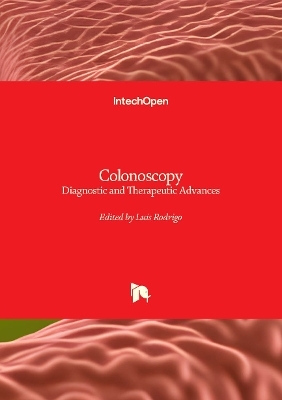
Colonoscopy
Diagnostic and Therapeutic Advances
Seiten
2024
IntechOpen (Verlag)
978-0-85466-401-6 (ISBN)
IntechOpen (Verlag)
978-0-85466-401-6 (ISBN)
- Titel nicht im Sortiment
- Artikel merken
A comprehensive overview of colonoscopy and highlights recent advances in the field. In the last decades a great variety of technical improvements has arrived, such as the use of different dyes for better identification of small lesions and the introduction of artificial intelligence.
Colonoscopy is a medical procedure involving the endoscopic examination of the large bowel (colon) and the distal portion of the small bowel. This examination is performed using either a CCD camera or a fiber optic camera, which is mounted on a flexible tube and passed through the anus.
The purpose of a colonoscopy is to provide a visual diagnosis via inspection of the internal lining of the colon wall, which may include identifying issues such as ulceration or precancerous polyps, and to enable the opportunity to remove and biopsy polyps and small colorectal cancer lesions.
Routine use of colonoscopy screening varies globally. It is a commonly recommended and widely utilized screening method for colorectal cancer, often beginning at age 45 or 50 years, depending on risk factors and national guidelines.
Conditions that call for colonoscopies include unexplained changes in bowel habits and suspicion of malignancy. Colonoscopies are often used to diagnose colonic polyps and colon cancer but are also frequently used to diagnose inflammatory bowel disease. A positive fecal occult blood test is almost always an indication to do a colonoscopy. In most cases, the positive result is just due to hemorrhoids.
A positive result can also be due to diverticulosis, inflammatory bowel disease (Crohn's disease, ulcerative colitis), colon cancer, or polyps. Colonic polypectomy has become a routine part of colonoscopy, allowing quick and simple removal of polyps during the procedure without invasive surgery. It is important to note that occasional rectal bleeding may have multiple non-serious potential causes.
In the last decades a great variety of technical improvements has arrived, such as the use of different dyes for better identification of small lesions and the introduction of artificial intelligence. This book provides a comprehensive overview of colonoscopy and highlights recent advances in the field.
Colonoscopy is a medical procedure involving the endoscopic examination of the large bowel (colon) and the distal portion of the small bowel. This examination is performed using either a CCD camera or a fiber optic camera, which is mounted on a flexible tube and passed through the anus.
The purpose of a colonoscopy is to provide a visual diagnosis via inspection of the internal lining of the colon wall, which may include identifying issues such as ulceration or precancerous polyps, and to enable the opportunity to remove and biopsy polyps and small colorectal cancer lesions.
Routine use of colonoscopy screening varies globally. It is a commonly recommended and widely utilized screening method for colorectal cancer, often beginning at age 45 or 50 years, depending on risk factors and national guidelines.
Conditions that call for colonoscopies include unexplained changes in bowel habits and suspicion of malignancy. Colonoscopies are often used to diagnose colonic polyps and colon cancer but are also frequently used to diagnose inflammatory bowel disease. A positive fecal occult blood test is almost always an indication to do a colonoscopy. In most cases, the positive result is just due to hemorrhoids.
A positive result can also be due to diverticulosis, inflammatory bowel disease (Crohn's disease, ulcerative colitis), colon cancer, or polyps. Colonic polypectomy has become a routine part of colonoscopy, allowing quick and simple removal of polyps during the procedure without invasive surgery. It is important to note that occasional rectal bleeding may have multiple non-serious potential causes.
In the last decades a great variety of technical improvements has arrived, such as the use of different dyes for better identification of small lesions and the introduction of artificial intelligence. This book provides a comprehensive overview of colonoscopy and highlights recent advances in the field.
| Erscheinungsdatum | 27.04.2024 |
|---|---|
| Verlagsort | London |
| Sprache | englisch |
| Maße | 175 x 254 mm |
| Themenwelt | Studium ► 2. Studienabschnitt (Klinik) ► Anamnese / Körperliche Untersuchung |
| ISBN-10 | 0-85466-401-7 / 0854664017 |
| ISBN-13 | 978-0-85466-401-6 / 9780854664016 |
| Zustand | Neuware |
| Haben Sie eine Frage zum Produkt? |
Mehr entdecken
aus dem Bereich
aus dem Bereich
aus Klinik und Praxis
Buch | Softcover (2023)
Urban & Fischer (Verlag)
CHF 58,75
Buch | Hardcover (2017)
Hogrefe (Verlag)
CHF 77,00
Buch | Softcover (2024)
Urban & Fischer in Elsevier (Verlag)
CHF 78,40


